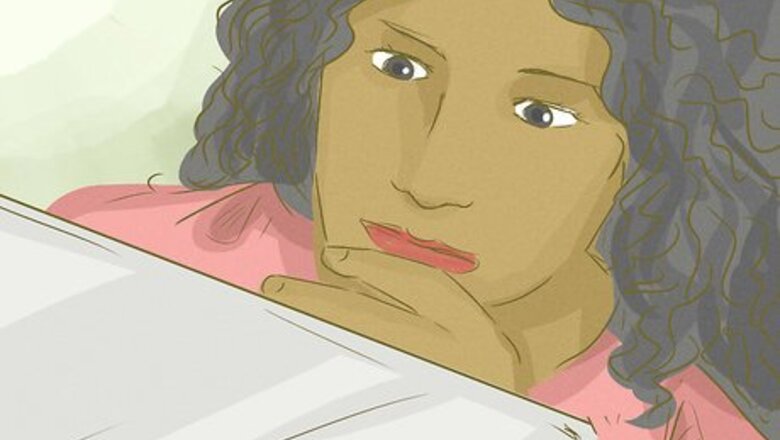
views
Animal Monsters and Cryptids of Native American Myth
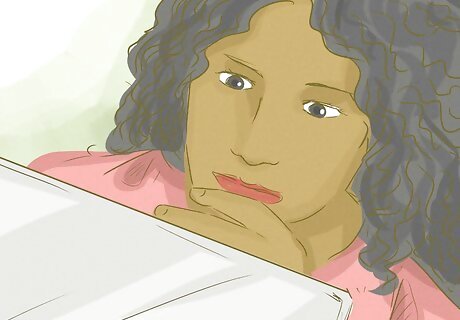
Thunderbird—Great Spirit Many Native American legends tell of the Thunderbird, a gigantic supernatural bird that helped protect mankind from evil spirits. It’s said to have provided water and vegetation for the earth, and lightning flashed from its beaks. It’s sometimes pictured as having a second head on its chest. Achiyalabopa is a rainbow-colored thunderbird in the mythology of the Pueblo Indians. It’s said that the feathers of this bird are as sharp as knives. The Cherokee had a legend about Tlanuwa, a giant hawk. Some people believe that Mothman is tied to the Thunderbird.
Bigfoot Legends around ape-like Bigfoots and Sasquatches in North American stretch back thousands of years. In fact, Bigfoot is considered sacred to the Sts’ailes people of the West Coast First Nations—they consider the sasq’ets to be a protector of the land and the people, and glimpsing them in the forest is a sign of good luck. Some legends say that Bigfoot can change its shape into a rock, tree, or even another animal, which explains why no one has found definitive evidence of its existence. Athabaskan folklore tells of aggressive Bigfoot-like creatures called Bush Indians that kidnap and eat children. Chickasaw tradition describes the Lofa, a large, hairy man-like creature that skins and eats its victims. In Arizona, legend tells of a hairy man-like creature called the Mogollon Monster. Yupik folklore describes Urayuli, a tall, hairy ape-like creature.
Deer Lady/Deer Woman The Deer Lady appears in stories from tribes living in the Central Plains regions. These tales tell of a beautiful woman with antlers and hooved feet. She appears to men, luring them deep into the secluded forest so she can eat them. Some legends say that after seeing the Deer Lady, the men are so entranced that they waste away or starve to death. In some stories, the Deer Lady appears as an old woman, and in others, she appears as a deer—not in human form.
Aniwye—Giant Skunk According to a legend of the Anishinaabe people of the Great Lakes region, Aniwye was a giant skunk whose scent was so horrific it caused people to get sick and die. Aniwye then fed on the people it had killed. Eventually, Aniwye was defeated and turned into an ordinary skunk. In some stories, Aniwye was originally a man-eating giant that broke wind to kill his victims, and he didn’t become a skunk until after his defeat. Other names for Aniwye include Giant Skunk, Mishi-zhigaag, and Mi-she-shek-kak.
Big Owl Monster The Big Owl, also known by names like the Owl-Man Monster or Big Owl Witch, is an Apache legend. It was said to take either the form of an ogre or a giant horned owl, and it would carry away children to eat them. Monsters like the Big Owl are often used as a cautionary tale to keep children from wandering away.
Haakapainiži—Man-Eating Grasshopper The Haakapainiži is a giant grasshopper that carries a large basket on its back. Its long legs are lined with spikes, and it's said to be able to walk 20 mi (32 km) in just one big step. Haakapainiži sometimes appears as a harmless-looking old man and sometimes as a swarm of grasshoppers. When Haakapainiži encounters a child, he quickly stuffs it in his basket to eat later.
Kushtaka—Soul-Stealing Otters Sea otters might be adorable, but the Tlingit people have a legend that shapeshifters called Kushtaka can change between human and otter form. The Kushtaka take human form and attack vulnerable people who are lost in the wilderness, either eating them or turning them into a new Kushtaka—an act that keeps the person’s soul from reincarnating. Some legends say that the Kushtaka lure victims by screaming or mimicking a child in danger. It’s said that traveling in groups and keeping dogs nearby can help protect you from the Kushtaka.
Aglebemu—Monster Frog According to Wabanaki legend, Aglebemu was a giant frog. It’s said that he dammed up all the waters to create a lake for himself. Aglebemu was eventually killed by cultural hero Kluskap, who released the waters so man could use them.
Ong—Bird With a Human Face The Washoe Tribe told of a creature called the Ong that hunted the shores of Lake Tahoe. His wings were as long as trees, he was covered in feathers and scales, and he had webbed feet and the face of a man. Ong would carry his victims high into the sky, then drop them in the waters of the lake, allowing the current to carry their bodies to his nest. Ong was eventually slain by a warrior named Tahoe, and the lake was named in his honor.
Piasa Bird—The Bird that Devours Men The Illini people tell of a legendary bird that lived along the Mississippi River around Illinois. The bird is said to have had scales as well as feathers, and paintings of the bird were reportedly seen by European explorers when they first entered the region. A later addition to the legend claims that the bird killed thousands of warriors before finally being defeated by Chief Ouatoga.
Shunka Warak’in—The Rocky Mountain Hyena The Shunka warak’in is a creature that’s said to hunt the Montana plains. A cross between a wolf, dog, and hyena, this mysterious creature slaughters dogs, sheep, and cows. A Shunka Warak’in was supposedly killed by a rancher in 1886. Its body is on display at the Madison Valley History Museum in Ennis, Montana.
Stikini—Owl Monsters The Stikini is a man-like owl creature from Seminole and Creek legend. During the day, the Stikini appears to be a normal human, but at night, it transforms into a giant horned owl that feeds on human hearts. It’s said that hearing the cry of a Stikini is a death omen. The Stikini can be killed by destroying the organs it hunts before it consumes them, trapping it in owl form as daylight approaches, or shooting it with a magic arrow treated with sacred herbs.
Stiff-Legged Bear The Stiff-Legged Bear (sometimes called the Hairless Bear) is a giant bear-like creature with fixed, stiff legs. It appears in the lore of a number of Native American tribes, including Cree, Ojibwa, and Penobscot. It’s said that this monster was the size of an elephant, that it ate humans, with the head and ears of a bear. Some people believe that these bears were inspired by mastodons. Similar bear-like creatures from Native American mythology include the Tagesho from Algonquin legend, Gici Awas of Abenaki lore, and Katshituashku from the Penobscot Nation.
Wampus Cat—Half Dog, Half Cat Variations on the Wampus Cat appear in numerous myths. It’s sometimes called a Gallywampus or Whistling Wampus, and it’s said to be a dog-cat hybrid that’s able to run on two legs or all fours. Typically, the Wampus Cat is seen just after nightfall or just before sunrise. In some stories, the Wampus Cat is evil, but in others, it’s the spirit of a warrior woman who defeated a terrifying demon.
Water Monsters of Native American Myth
Akh’lut—Orca Wolf(Kăk-whăn’-û-ghăt kǐg-û-lu’-nǐk) The akh’lut is a creature from Inuit folklore. Its primary form is an orca (Akh’lut), but it can shapeshift as a wolf to hunt on land. When in its wolf form, it’s given the name kăk-whăn’-û-ghăt kǐg-û-lu’-nǐk. These are said to be intelligent, aggressive creatures that will hunt and kill people, and may be used as a cautionary tale to keep children from getting too close to the water. When depicted in artwork, the akh’lut is usually shown halfway through its transformation, with the front half of an orca and the hind legs of a wolf. According to some stories, the ahk’lut was originally a man, but he was so obsessed with the sea that he was transformed into a wolf and cursed with an insatiable hunger. He then leaped into the sea, where he became a monstrous orca that could shapeshift back into wolf form.
Altamaha-ha—Georgia’s River Serpent The legend of the Altamaha-ha originated with the Muskogee Creek Tribe. It’s said to be a river serpent that lives in the Altamaha River in southeastern Georgia that could be as much as 20–30 ft (6.1–9.1 m) long. The Altamaha-ha has an alligator-like head, front flippers, no back limbs, and a round, serpent-like body. People still claim to see the creature to this day, although there are differing reports of its size—possibly a sign that there are more than one living in the river. The Altamaha-ha is not considered aggressive—reports from those who claim to have seen it usually describe it as basking on the shore or swimming peacefully in the water, although it may react defensively if it encounters people.
Apotamkin—Passamaquoddy’s Sea Serpent The Apotamkin is said to be a sea serpent that lives in Passamaquoddy Bay. This monster has long red hair and fangs, and it’s said to pull people into the water so it can eat them. According to some legends, the Apotamkin was originally a woman, but she was transformed into a serpent. Apotamkin may have originated in the Passamaquoddy and Maliseet cultures as a cautionary tale to warn children of the dangers of playing too close to the water’s edge. A similarly sinister creature is the Tie-Snake of Creek legend, a monster that lurked in the Chattahoochee River, waiting to pull unsuspecting victims under the water.
Ogopogo—Serpent of Okanagan Lake According to a legend from the Okanagan people, the Ogopogo(or N'ha-a-itk) is said to be a spirit that takes the form of a water serpent living in Okanagan Lake. The Okanagan people treated the Ogopogo with fear and respect, but they didn’t consider it an evil creature. Film footage shot in 1968 by Art Folden (known locally as the “Folden Film”) shows an unknown creature swimming in Okanagan Lake, leaving an impressive wake. A video in 2011 showed similar movement in the water.
Flathead Lake Monster The Flathead Lake Monster—known locally as Flessie or Flossie—is said to be an eel-like creature that’s anywhere from 20–40 ft (6.1–12.2 m) long. The Kootenai Tribe told of a monster in the waters that are now called Flathead Lake, and their name for the lake meant “Monster Lake.” Flessie is still a popular figure today, and over 100 sightings have been reported since 1889. Some people believe sturgeon are responsible for the legends, but others remain convinced Flessie is alive and well.
Gunakadeit—Sea Reptile In Tlingit mythology, the Gunakadeit is a legendary sea creature. It’s said that anyone who sees the Gunakadeit will have good fortune. Gunakadeit may also have been used as a cautionary tale to keep children away from the water’s edge. In 2020, a fossil of an ancient marine reptile was given the name Gunakadeit joseeae out of respect for the Tlingit people.
Mishipeshu—The Great Lynx Mishipeshu comes from an Ojibwa legend of a dragon-like lynx with horns that lived underwater. Its back and tales are covered with scales, and its great paws allow it to swim quickly. Legend says that Mishipeshu is responsible for rapids and whirlpools, and that the scales on its back allow it to break the ice under people’s feet in winter. If a lake suddenly changes its appearance—like the color of the water changes, or a fog or strong wind suddenly appears—it’s said to be a sign of Mishipeshu’s presence.
Qalupalik—Sea-Dwelling Shape-Shifter The Qalupalik (also spelled Qallupilluit and Qallupiluk) is a monster that lives in the sea just underneath ice floes. If a child wanders too close to the edge of the water, Qalupalik will grab the child and place them in her parka so they can’t escape. Then, she drags them into the icy water to eat them.
Demons and Spirits of Native American Myth
Great Horned Serpent The Great Horned Serpent appears in many different Native American myths and legends. Typically, it appears as a great dragon-like serpent. The Great Horned Serpent is often depicted as a god, ruling over waters, lakes, and streams. It’s generally seen as a malevolent creature, responsible for floods, storms, and rough waters. The Cherokee version of this legend tells of the serpent Uktena, has a crest on its head that shines so brightly that it makes men run toward the serpent instead of trying to escape. Sisiutl is a horned serpent of the Kwakwaka’wakw people. It’s often depicted as having two heads. Other horned serpents from Native American mythology include Michabo (Algonquian), Sint-holo (Chickasaw), Skatona (Sia), Onniont (Huron), Hiintcabiit (Arapaho), and Kolowisi (Zuni).
Wendigo—Cannibal Monster The Wendigo is a terrifying monster from the Algonquin and Great Lakes tribes. The Wendigo is tall and thin, able to quickly disappear behind trees to avoid being seen. It also has sharp claws, glowing eyes, and an insatiable hunger for human flesh. Some stories say that the Wendigo is a demon or spirit, while others say humans transform into Wendigo if they are very greedy or if they engage in cannibalism.
Átahsaia—Tusked Demon According to Zuni legend, Átahsaia was a giant cannibal demon who hunted with a large flint axe (or knife) and a bow made of an oak sapling. He was said to be twice as tall as a human, with sharp yellow tusks, shaggy coarse hair, a wide red mouth, clawed hands, and scales on his arms and legs. It’s said that Átahsaia was so fearsome that even the other demons roaming the area were afraid of him. Legend says that eventually Átahsaia was confronted and killed by the war gods Åhayúta and Mátsailéma.
Bakwas—Wild Man of the Woods The Bakwas (variations on the spelling include Bukwus and Pugwis) is a thin, long-haired ghost of Kwakiutl lore. He’s said to lure people into the water so he can drown them. The Bakwas is said to wear a colorful mask to hide his face. Tribal dancers sometimes wear masks and elaborate hair-covered costumes to represent the Bakwas. The Bakwas tempts people to eat ghost food—it will look like a traditional food, like dried salmon, but will actually be made of rotten wood, lizards, or bugs. If a person eats this food, they will become a Bakwas as well.
Hobbomock—Death Spirit Hobbomock, also known as Chepi, is a ghost or evil spirit of death. He’s sometimes used as a bogeyman to scare children, but in some legends, he also plays spiteful tricks on adults, like stealing their eyelids or twisting their feet. After the Wampanoag and Narragansett tribes were introduced to Christianity, Hobomock became associated with the Devil.
Dzoavits—Earthquake Demon The Dzoavits was a demon in Shoshone myth. It is said that he entertained himself by causing earthquakes and volcanoes, and that he enjoyed terrorizing men and provoking them into cannibalism and acts of violence. He also stole and ate eggs from sacred birds. Legend says that the Dzoavits was lured into a cave, where he remains sealed to this day.
Kanontsistonties—The Flying Head Kanontsistonties, or flying heads, were terrifying figures from Iroquois legend. This creature was said to be a giant head, about four times larger than a man’s, with wings coming from its cheeks. It was covered in thick black hair and had two claws on its underside. It used these claws and its razor-sharp fangs to kill and eat any living thing it came across, including people. Some legends say that this head would rise up out of a nearby lake to terrorize the Iroquois people. The Flying Head would sometimes appear near a family’s home, beating its wings against a window. Legend said that if it appeared, someone in the household would die within a few days. Some tribes, like the Cree, tell of a Rolling Head with long, tangled hair. It’s also said to kill and eat people.
Man-Eater The Man-Eater figure appeared in the legend of many Native American tribes of the Southeastern US. In some tales, he was a giant bear-like creature. In Creek and Seminole stories, Man-Eater took the form of a cat. And the Alabama and Koasati tribes saw him as an elephant-like creature, possibly inspired by mammoths or mastodons. No matter what form it took, the Man-Eater was a dangerous monster that preyed on humans.
Nalusa Chito—Big Black Thing According to Choctaw legend, the Nalusa Chito—also called the Impa shilup—is a devil-like creature. It’s said that if you entertained dark thoughts, the Nalusa Chito would be able to possess you and eat your soul. Many Choctaw people refuse to speak the name of Nalusa Chito to avoid catching his attention.
Nalusa Falaya—Long Black Being The Nalusa Falaya is another creature from Choctaw legend. This one is human-like in its appearance, but it often crawls on its belly like a snake. This creature has tiny eyes and long black ears, and is known to frighten hunters.
Oniate—The Dry Hand Oniate is a disembodied hand from Iroquois mythology. The mummified appearance of the hand gives it the name Oniate, which translates to “dry fingers.” Any person Oniate touches becomes sick or ill, or may even die. Oniate especially targets anyone who intentionally causes strife in their community or who speaks ill of the dead.
Pamola—Guardian of Katahdin The Penobscot Nation tells of a creature named Pamola that guards Mount Katahdin (or K’taadn). Traditionally, Pamola was depicted as a hideous, evil beast with long, thin arms and legs and a sharp beak. It was said he would kill and eat anyone who tried to climb the mountain. In modern times, Pamola has a friendly, moose-like face, and the wings of an eagle, and he’s seen as a mascot of sorts for people climbing Katahdin.
Raven Mocker—Life-Stealer The Raven Mocker is a creature from Cherokee legend that is said to prey on those who are near the end of life. If someone is ill or close to dying, the Raven Mocker will enter the person’s home and frighten them until they die. They will then eat the heart of the person who died as a way to extend their own life. Raven Mockers are said to look aged or shriveled, with a human-like form, feathers, and talons. They sometimes leave a trail of sparks as they fly. It’s said that experienced doctors can recognize Raven Mockers and keep them away.
Paakniwat—Water Babies Water Babies are spirits that are said to inhabit bodies of water. These spirits sometimes appear in the water, luring in people who think it’s a real baby. Other times, they imitate a baby’s cries. The water babies have skin of stone, so once someone enters the water, they’re able to drag the person down into the depths. Some legends say that the water babies will take the place of a human baby, eventually eating the mother.
Muut—Death In Cahuilla culture, Muut was responsible for guiding souls to the afterlife. He was often depicted as an owl or with owl-like features. Sometimes, he was personified as an unseen being, represented by the hooting of owls. Although he’s sometimes referred to as a Native American version of the Grim Reaper, Muut isn’t generally considered a scary figure—he’s a “psychopomp,” meaning a spirit that guides souls after death, rather than a harvester of souls or the agent of death.
Witches, Goblins, and Ogres of Native American Myth

Skinwalkers Skinwalkers are some of the most well-known monsters from Native American myth, but that doesn’t make them any less terrifying. Skinwalkers are evil witches from Navajo culture who can transform into any animal they wish. They also have the power to control people’s thoughts and actions. Some legends say that the skinwalker must wear the pelt of an animal to transform into it. They may also wear skulls or antlers on their heads. Legend says that in order to become a skinwalker, a person must go through an initiation that requires them to perform evil acts, including killing a close family member.
Wild Men and Women Many Native American tales tell of man-eating giants or ogres who lived in the wilderness. These beings were often women, but could sometimes be men. They likely originated as cautionary tales to help keep children from wandering into the forests. Asin (or Lxalwaena) was a man-eating ogress, according to the Alsea people of Western Oregon. She was associated with the huckleberry plant, and the sound of her laughter or crying was said to be an omen of death. A similar legend in the Northwest tells of the Basket Woman, a giantess who captures children and carries them in her basket back to her lair. Other wild giants include Dzunukwa and Gougou (also called Gugwe or Kukwe). Spearfinger is an Ogress from Cherokee legend. Her skin is like stone, and she has one long, sharp finger on her right hand. She uses this finger to pull out human livers for her dinner.
Chenoo—Ice Giants The Chenoo are cannibal ice giants of Algonquian legend. Chenoos were said to have originally been human, but their hearts were turned to ice, either because they were possessed by an evil spirit or after committing an unforgivable crime like cannibalism. Chenoo look like disfigured humans, with the eyes of a wolf. A few legends told of people having their humanity restored after becoming a Chenoo, but more commonly the Chenoo were slain. Similar ice giants include Giwakwas of Wabanaki mythology and Mhwee (or Mhuwe) of Lenape lore.
Pukwudgies—Little Tricksters Pukwudgies are part of Lenape and Wampanoag folklore, and stories about these little people stretch back at least 9,000 years. According to legend, the goblin-like pukwudgies originally tried to befriend and assist humans, but they found the humans ungrateful, so they turned into mischievous tricksters instead. Pukwudgies are notorious for annoying pranks like throwing sand in people’s eyes and stealing food. In some stories, pukwudgies are malevolent, killing humans and burning their villages. Pukwudgies are notable for the quills running down their back, making them look like a porcupine from the rear.
Ircenrraat—Little People The Ircenrraat are a magical race of Little People from Yupik legend. In some villages, the Ircenrraat are a mischievous presence, similar to fairies or goblins. They shuffle things around, but otherwise don’t cause much serious trouble. But in other places, the Ircenraat are said to bring bad fortune, and anyone who sees them will disappear for a year, sometimes never to be seen again. Occasionally, stories depict the Ircenrraat as kindly creatures. The Teihiihan are similar man-eating, dwarf-like creatures from the Plains Indians.
Skadegamutc—The Ghost Witch The Skadegamutc (or Skudakumooch) is an Algonquian ghost that is born from the body of an evil sorcerer. After the sorcerer dies, his spirit becomes a zombie-like ghost that roams the night, feeding on human flesh. Some people say that just being touched by a Skadegamutc will paralyze you, and speaking their name can summon them.

Mskagwdemos—Swamp Woman Mskagwdemos, or the Swamp Woman, is a creature who wanders in the swampy forests of the Great North Woods. She cries endlessly as she wanders—legends differ on whether she’s truly lonely or if she’s just hoping to lure well-meaning travellers to their death when they try to help her.










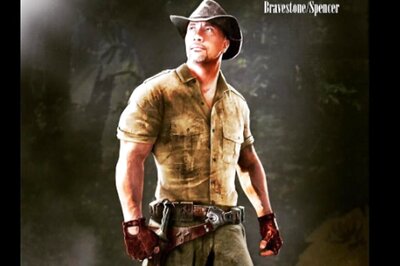
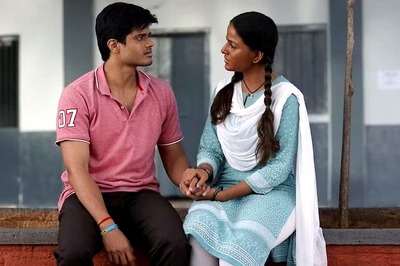


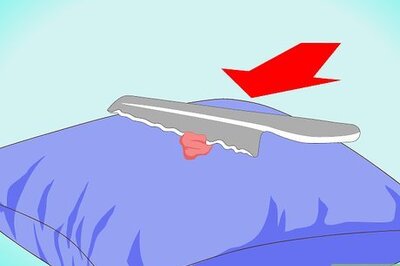



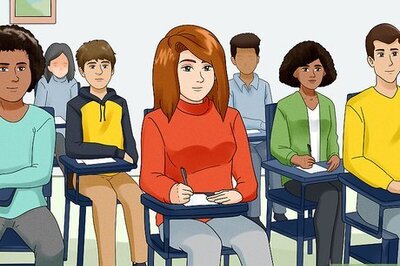

Comments
0 comment